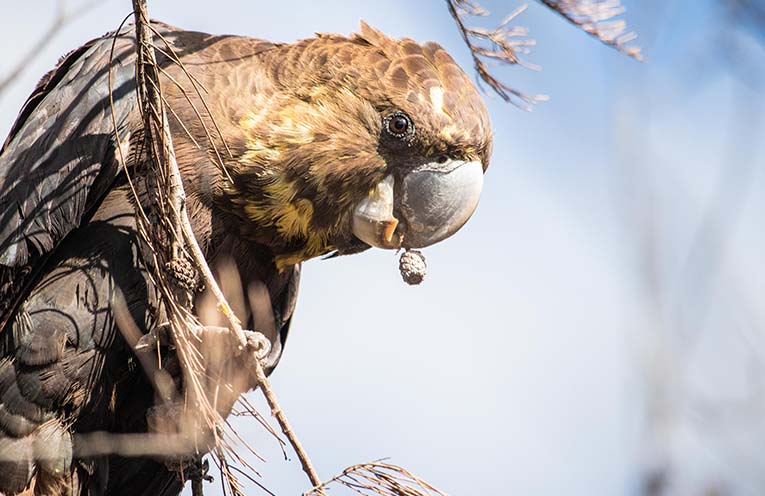
BIRDLIFE Australia is calling on citizen scientists to support the bushfire recovery of South-eastern Glossy Black Cockatoos on the Coffs Coast.
Anyone who will be on the Coffs Coast, that’s Coffs Harbour, Bellingen and the Clarence Valley, during Saturday 29 and Sunday 30 October can take part in the Coffs Coast Glossy Count, no previous experience required.
 Advertise with News of The Area today.
Advertise with News of The Area today.It’s worth it for your business.
Message us.
Phone us – (02) 4981 8882.
Email us – media@newsofthearea.com.au
Citizen scientists will learn how to identify Glossy Black-Cockatoos and their feed trees at the following local training
workshops.
– Coramba Community Hall on Saturday, 15 October 2022 at 2:00 – 4:00pm
– Coffs Harbour on Sunday, 16 October 2022 at 1:00 – 3:00pm.
– Online via Zoom on Wednesday, 19 October 2022 at 6:30 – 7:30pm.
Citizen scientists can register for the event and sign up for a workshop via the BirdLife website at bit.ly/glossyproject.
They can also prepare for the event using training materials and guides found on the web page.
“Bellingen Birders has a team of around 24 of its members collating sightings of Glossy Black-Cockatoos in the Coffs Coast-Bellingen-Nambucca Heads area,” Bellingen Birder’s Richard Jordan told News Of The Area.
“We have identified ‘hot spots’ for these rare birds, especially in the Urunga area.
“We are looking forward to extending the scope of our surveys under the program just announced.
“There is a need to assess the inland areas burnt in the 2019/2020 wildfires.
“We hope to get to those locations to see just what effect the fires have had on the ‘Glossy’ population, and whether they are recovering.”
The devastating bushfires of 2019‒20 impacted over a third of the South-eastern Glossy Black-Cockatoo’s distribution, damaging large areas of vital foraging and breeding habitat.
Two years on, it is now listed as Vulnerable under the Environment Protection and Biodiversity Conservation
Act 1999, the key piece of national legislation for managing threatened flora and fauna.
Glossy Black-Cockatoos feed on particular she-oak trees for food, creating an urgent need to identify and protect remaining feed trees.
This is a considerable challenge for a widely distributed bird and so citizen scientists will be crucial to efforts to collect data on the birds and their habitat.
The Coffs Coast Glossy Count is part of the Glossy Project (Coffs Coast), a new citizen science project focusing on the recovery of South-eastern Glossy Black-Cockatoos on the Coffs Coast, NSW.
BirdLife and collaborators will work with the community to monitor Glossy Black-Cockatoos then use this data to guide actions to protect, enhance and create foraging habitat.
This will both secure existing feed trees and ensure there will be foraging habitat to support the birds in the years to come.
This project is funded by BirdLife Australia and the NSW Government’s Saving our Species program.
By Andrea FERRARI
